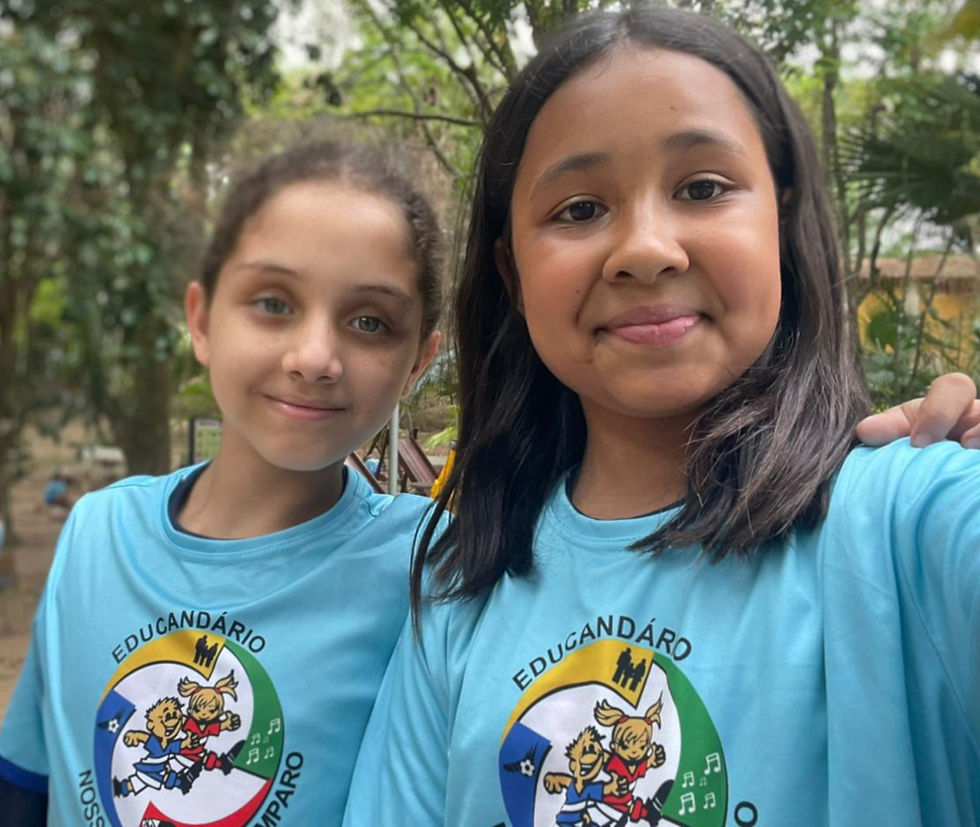O renascimento de Maria (EDS)
- ABMTHS
- 8 de jul. de 2022
- 3 min de leitura
Atualizado: 29 de mai. de 2023

Depois de mais de dois anos sem levar o Centro Cirúrgico Móvel para dentro da floresta, mais de 90 voluntários partiram de Campinas (SP) com destino à pequena cidade Normandia, ao norte de Roraima, próximo à fronteira com a Guiana. Não era uma expedição qualquer: estamos aqui falando de uma ação que entregaria, mais tarde, quase 500 cirurgias em um território isolado na Amazônia - um recorde da EDS que escancara a demanda reprimida pelos efeitos da pandemia entre populações indígenas.
Não é de hoje que a ONG Expedicionários da Saúde cuida de quem cuida da floresta. Foi em 2003, quando um grupo de amigos médicos, em uma de suas viagens aventureiras, decidiu explorar o Pico da Neblina. Na descida conheceram uma comunidade indígena muito isolada em que viviam bem, exceto pela ausência de saúde especializada - quase que inexistente na região. A partir daí, os amigos decidiram retornar periodicamente para diferentes comunidades da região do Alto Rio Negro (AM) para oferecer atendimento, e logo viram a necessidade urgente de criar um modelo de hospital que pudesse atender a determinadas demandas cirúrgicas, mas adaptado às condições amazônicas, evitando assim que os indígenas precisassem deixar suas comunidades para ir a grandes centros e entrarem em filas de espera que poderiam demorar anos. Assim nasceu, pelas mãos do atual presidente, Dr. Ricardo Affonso Ferreira a EDS.
2022 foi um recomeço para a Organização, já que marcou a retomada das tradicionais expedições, agora com um novo Centro Cirúrgico Móvel, mais moderno e eficiente. A ONG atuou de forma intensa no combate à pandemia nos dois anos anteriores, e todos os esforços estavam voltados para o tratamento de pacientes acometidos pela Covid-19, tanto na Amazônia, quanto em Campinas (SP). Portanto, a Expedição 47, que aconteceu na Terra Indígena Raposa Serra do Sol, mais precisamente no Lago do Caracaranã, teve um gosto ainda mais especial.
Nesta missão em particular a EDS colecionou dezenas de histórias emocionantes. Crianças, jovens e idosos indígenas tiveram suas vidas transformadas radicalmente após serem submetidas a cirurgias que, para nós, que vivemos nos grandes centros urbanos, são relativamente simples.
Uma das histórias mais marcantes da expedição na Raposa Serra do Sol é da indígena Maria Macuxi, mãe de dois filhos pequenos e totalmente cega, até então. A catarata, doença que acometeu Maria de forma precoce, não é rara em regiões equatoriais como a que vive, devido à alta incidência dos raios solares. Trata-se da principal causa de cegueira reversível no mundo e pode ser altamente incapacitante já que tira o paciente de sua vida normal e produtiva.
Maria chegou à Expedição com medo, mas ao mesmo tempo com esperança, pois aquela seria, talvez, a única oportunidade de voltar a enxergar. Já no Complexo Hospitalar EDS, fez exames e consultas com os médicos voluntários e foi internada para ser operada no dia seguinte. Ansiosa, ao entrar em cirurgia, pediu para que seu marido cuidasse de seus filhos, um de 4 e outro de 1 ano de vida - que agora aguardavam do lado de fora, também apreensivos. O procedimento foi um sucesso e em meia hora Maria já estava liberada para o pós-operatório para, no dia seguinte, receber alta médica.
Todos os dias de expedição, bem cedo, os voluntários acompanham um ritual que é de emocionar qualquer um: os pacientes operados no centro de Oftalmologia, muitos parcialmente ou totalmente cegos, têm seus tampões removidos dos olhos e voltam a enxergar pela primeira vez em anos. Lá estava Maria, sentada, aguardando pacientemente sua vez, sem saber exatamente o que esperar. Ela ouviu uma voz desconhecida: "Bom dia Dona Maria, vamos tirar seu tampão e pingar um colírio?" - dizia a enfermeira Ana Paula que cuidadosamente tirou o curativo. Tímida, a paciente viu aos poucos a luz entrar em seus olhos e, a cada segundo que passava, reconhecia ao seu redor cores e formas que há muito tempo já não enxergava. Maria se emocionou muito, mas não esperava pelo que aconteceria em seguida: ainda se habituando com a claridade e com tudo que via, ouviu a voz já conhecida de seu marido, que delicadamente colocou seu filho mais novo em seu colo.
Maria enxergou seu filho pela primeira vez.

Num choro compulsivo misturando alegria e alívio, abraçou a criança agradecendo repetidamente por aquele momento. Olhava atentamente para cada parte do rosto e do corpo do filho, e as equipes de saúde que assistiam à cena se emocionaram como se estivessem assistindo a um nascimento. Foi Maria quem renasceu naquele dia.
A paciente Maria Macuxi é um de muitos exemplos de transformações de vida que passam pela EDS, e são, sem a menor dúvida, a confirmação de que os Expedicionários da saúde estão no caminho certo em direção ao cuidado dos verdadeiros guardiões da Amazônia, da preservação da floresta e da cultura indígena.
*a fim de preservar a identidade da paciente, a AbmthS utilizou o nome fictício de Maria.



Comentários